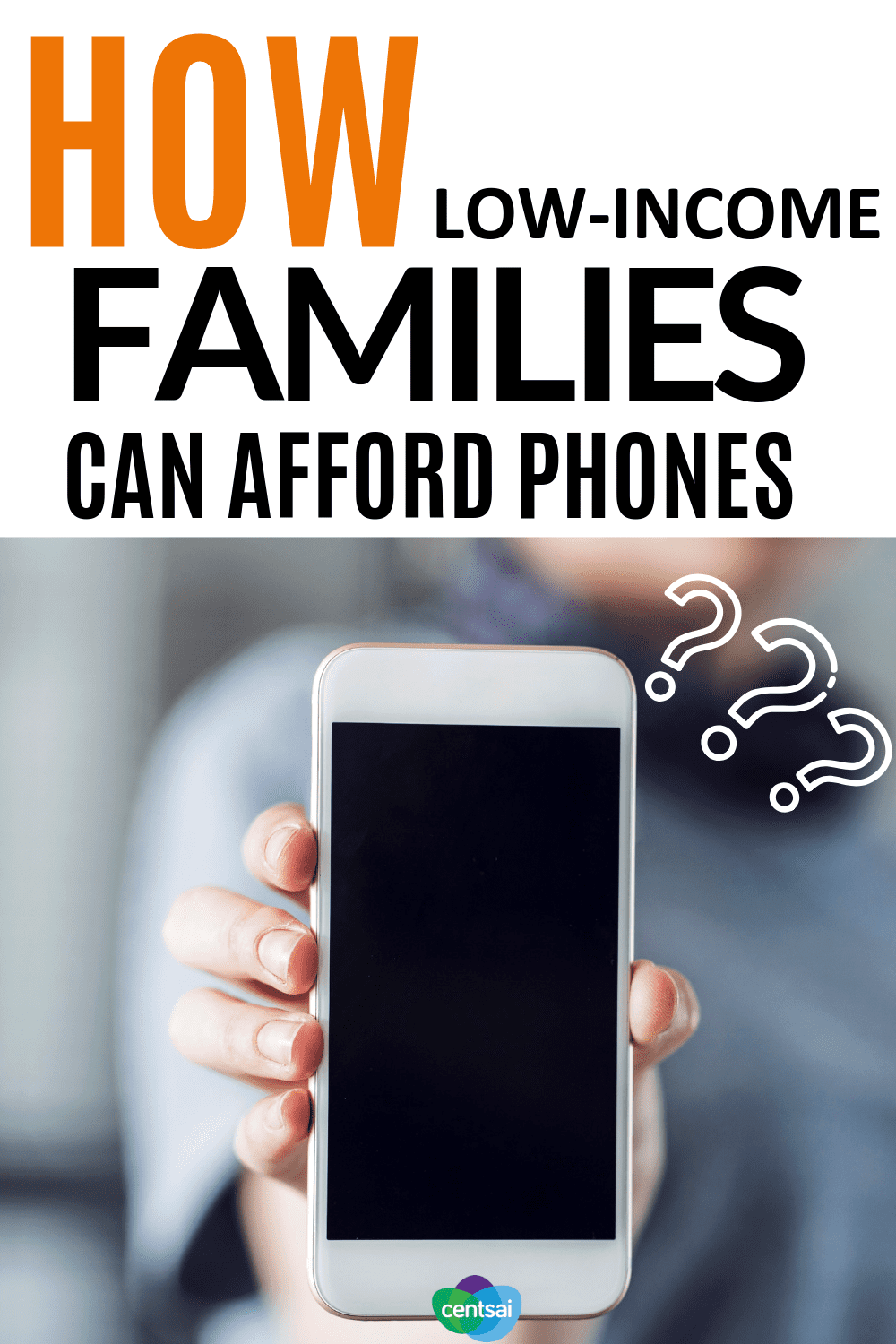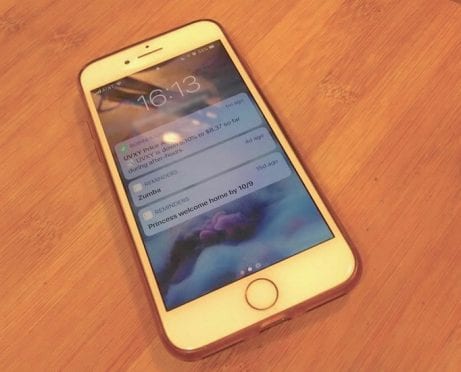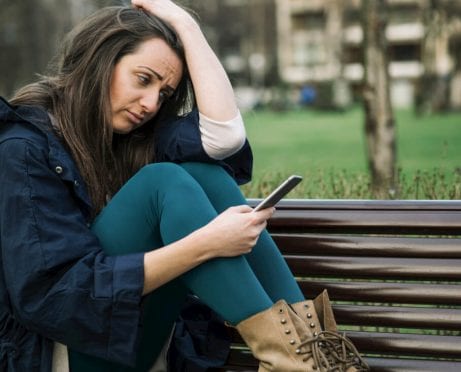
Author Taylor Haberkern and friend Nicholas at 9 years old, Polk Street School, Long Island
These days, it’s impossible to get by without a phone, yet 4 percent of Americans still don’t own one. Even more struggle to pay their phone bills. I lived my childhood largely without a phone. Let me share what that meant.
My mother raised me by herself in a household where being able to have dinner was a “maybe,” so a $100-a-month cell phone was out of the question. Because we couldn’t afford a phone, I often had no way of communicating with my mom or friends unless it was face-to-face.
Start Managing Your Finances — Download This Personal Finance App >>
What Happens When You Need a Phone, But Can’t Afford It?
 Even when my parents first separated, they tried to alternate parental responsibilities. One afternoon, my mother asked my father to pick me up from school, but due to a long night shift, he was still asleep by the time 3 p.m. rolled around.
Even when my parents first separated, they tried to alternate parental responsibilities. One afternoon, my mother asked my father to pick me up from school, but due to a long night shift, he was still asleep by the time 3 p.m. rolled around.
I found myself nervously standing on the street corner for a half hour. Only 8 years old at the time, I didn’t know what to do as time passed. So I did what I was told — wait for my dad on the corner.
The crossing guard noticed me, the last kid left — the little girl standing alone — and offered her own cell phone for me to call my mother.
I was so unfamiliar with cell phones that she had to dial my mother’s work number for me.
My mother quickly arrived. If it wasn’t for the crossing guard, I would have easily stood there for hours, a defenseless child on a street corner.
An Imperfect Solution
This event introduced a new afterschool system: My mother adjusted her work schedule so that I could walk home and she would let me in when I arrived.
For the most part, that worked except for the one time a family friend was hospitalized and my mother left a message at my school for me to stay there until she could pick me up. But the message never got to me.
Imagine my mother’s panic when I wasn’t at school. Luckily, we lived so close by it took me less than 20 minutes to get home, realize she wasn’t there, and return to the school because I didn’t have a house key.
Handling Housing Insecurity When You Can’t Afford a Phone
We moved around a lot, sometimes after two days, sometimes after two years. We constantly searched for a place that offered both a job for my mother and a good school for me. Going from apartment to motel to basement, every goodbye was forever.
I changed from an outgoing child to a downright reclusive one by our third move.
Friends didn’t seem worth the effort when I knew I was just going to lose them by the same time next year.
Moreover, I had no way to notify or communicate with my mother if somebody proposed hanging out at the park, I wanted to stay after school for a club, or an emergency arose.
One day, while my mother was at home searching for a job, we were evicted from our apartment. I arrived home from my after-school job to find my mom sitting on the stoop of our apartment building — where she remained for four hours — waiting to give me the news.
This was the life we lived until my mother discovered a program called Lifeline.
Struggling to Find Work? Get Help With Your Job Hunt >>
What Is Lifeline?
Lifeline is a national program created by the Federal Communications Commission (FCC) to reduce and sometimes eliminate the costs of a phone. The program provides a discount on monthly phone service — $9.25 per month for eligible low-income subscribers, as well as a free Android phone where available.
Qualifying Programs
Eligibility is determined by your income or a government assistance program. If your income is at or below 135 percent of the federal poverty guidelines or you’re in a program like Medicaid or Supplemental Nutrition Assistance Program (SNAP), you qualify.
If you participate in one of these following government programs, you qualify for Lifeline:
- Supplemental Nutrition Assistance Program (SNAP)
- Medicaid
- Supplemental Security Income (SSI)
- Federal Public Housing Assistance (FPHA)
- Veterans Pension or Survivors Pension
- Bureau of Indian Affairs (BIA) General Assistance
- Tribally Administered Temporary Assistance for Needy Families (TANF)
- Tribal Head Start
- Food Distribution Program on Indian Reservations
The process to join Lifeline can be confusing — I had my mother’s help when I applied, and it still took me two weeks to finish it — but it’s not impossible. Qualifying is the first step!
How Do I Enroll in Lifeline?
After determining that we qualified for Lifeline, my mother and I discovered the hard part: actually getting a phone.
You don’t apply on the Lifeline website, but rather on a cell phone provider’s site.
The providers available are whichever companies near you that offer the Lifeline Program discount.
There’s a nifty search page for this that allows you to look for companies based on your city or zip code. It’s up to you to choose which company you’ll use. You’ll likely recognize many of the names, such as Verizon or AT&T. Every company name on the search results page should be linked directly to that company’s Lifeline page. This page will offer further instructions on the process, as well as the application.
If you can’t locate the application, lack internet access, or have any other issues, call the provider and explain the issue. In-person application sessions aren’t usually an option, but many providers will mail you an application or could allow you to apply over the phone.
A Complicated Process to Get a Phone
The process seemed unnerving to me — especially because my company required me to either email copies of my Social Security card and ID or mail physical copies. I chose the former, and thankfully the only consequence was my new phone.
The exact process can vary by provider. In my case, I received a free phone in the mail after the process was complete. I receive 1,000 minutes and one GB of internet each month. If needed, I can purchase more data at any time.
Being able to own my own phone was utterly invigorating.
And it was undoubtedly entertaining for those around me to see me so excited over something so simple.
Do Your Research and Stay Up-to-Date
Not all providers will give you a free phone or completely free service. It depends on what you qualify for and what the company offers. Because of this, it could be beneficial for you to “shop around” and see what all the providers in your area can offer for those who need a phone, but can’t otherwise afford it.
I didn’t have a say in which phone I received, but it was a budget Android smartphone that gets the job done. That said, it has notable downsides, such as being unable to receive pictures via text.
If this is a deal-breaker for you, it may be better to purchase a compatible phone yourself then sign up for the program. This will guarantee that you have all the features you want or need.
Lifeline isn’t a one-and-done program, though.
You need to recertify and prove that you’re still eligible after a year (or more, depending on your provider). This process is similar to the initial application. You once again show that you’re in an assistance program or at an income level that qualifies you.
If you find yourself suspecting a scam or fraud of some kind relating to Lifeline, the FCC Enforcement Bureau has a dedicated Lifeline fraud tipline. Call 1-855-4LL-TIPS (or 1-855-455-8477) or email Lifelinetips@fcc.gov.
Avoid Having Your Data Breached — Price Your Protection >>
Final Thoughts on How to Afford a Phone on a Low Income
Lifeline lives up to its name for those who need a phone, but can’t afford it. With this service, for the first time in my life, I have the luxury of being able to talk to anyone from anywhere. I can keep in touch with friends after high school, and I was able to tell my mother about my misadventures during my first year of college as they happened.
And on a more serious note, I have the safety of a phone with me as a young woman. Especially given that my university campus is large with great spans of woods trailing along many paths, it’s reassuring to have one hand on my keys and the other on my phone, ready to call for help should I need it.
However, the fact that it took so long to even find this program or that my family struggled so much financially that we weren't even afforded a phone is a bleak reflection of many families’ lives.
“The need for the Lifeline program underscores how much work we need to do in financial literacy,” says Peter Neeves, Ph.D., a financial literacy expert. “Financial literacy programs often miss those most marginalized — those where financial literacy can have a true life-changing impact. We need to address the root causes, and financial literacy can help.”
This App Makes Managing Your Finances Easy — Start Budgeting Today >>
Lifeline is an invaluable program that seeks to let anyone and everyone have access to a phone and internet in our technologically forward age. Hopefully, with Lifeline, that phoneless 4 percent will drop to zero.
While everyone — including myself — hopes to eventually pay for their own phone bill, I am grateful that this government-subsidized service gave my mother and me a chance.






